Considering their Middle Eastern and western Asian roots, fig trees (Ficus carica) are generally considered warm-climate plants.
But our friends in the North and Midwest may rejoice, because you of colder climates need not be fig-less.
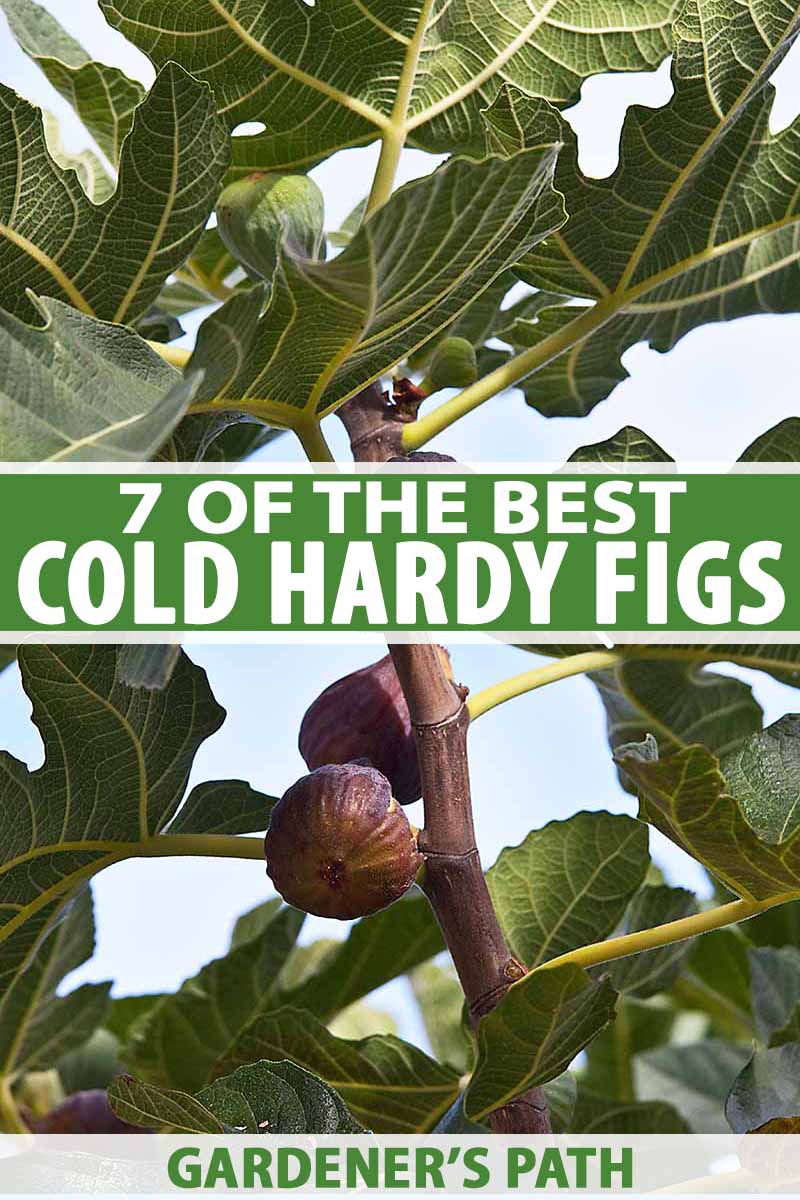
We link to vendors to help you find relevant products. If you buy from one of our links, we may earn a commission.
Multiple varieties of cold-tolerant figs are available, and we’re going to share our favorites with you here. If you’re altogether new to growing these trees, be sure to check out our fig growing guide.
Best Cold Hardy Fig Varieties
But first, let’s get some idea of how to maximize success when growing figs in chilly weather.
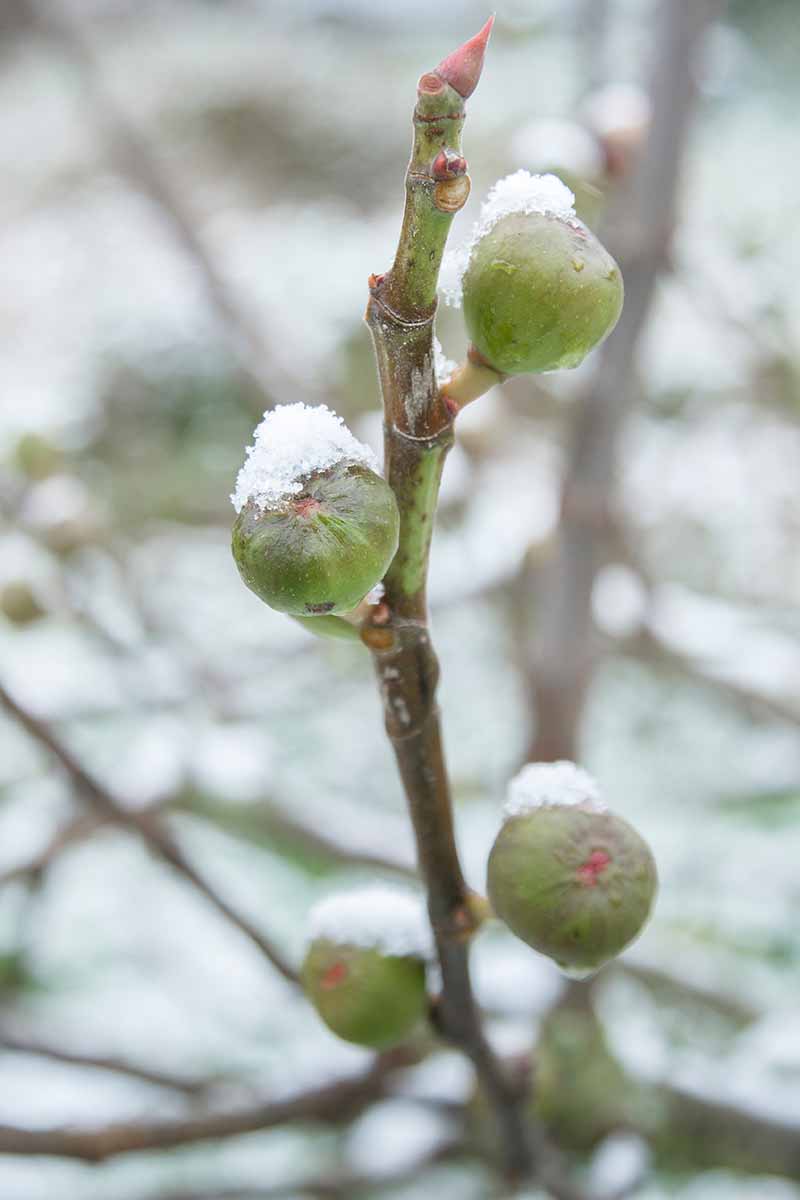
Most fig trees will thrive unprotected in USDA Hardiness Zones 8 to 10. The cold-hardy varieties can withstand winters in Zones 6 and 7, but they will require some protection.
Tips for Growing Figs in Cold Weather
After you choose the cold-hardy variety you would like to plant, the next important factor is site selection. Even a type well-suited for your climate needs a head start by being planted in a protected location.
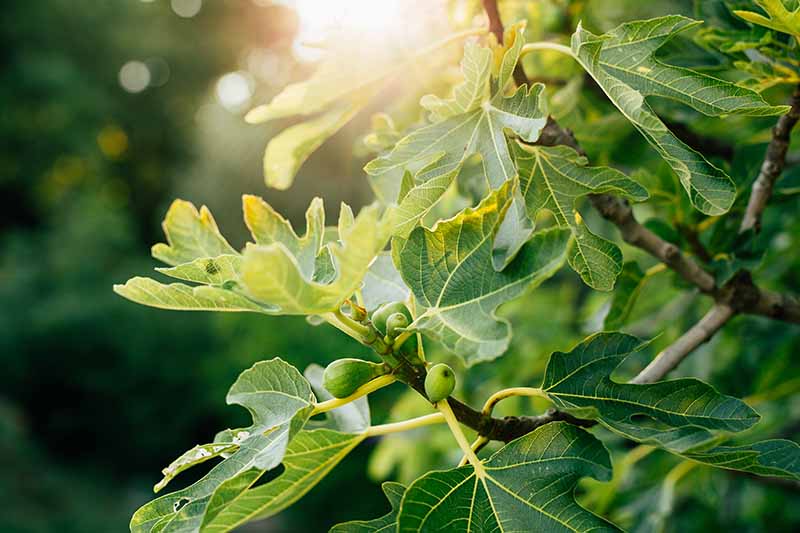
Your best bet is to site your tree in a sunny area protected from wind – next to a south-facing wall, for example.
If you suspect you might have to cover or wrap your tree to keep it safe through the winter, consider keeping your tree pruned into a bush form.
Burlap and tar paper are good materials to use if you need to wrap your tree. You can also construct a “cage” of chicken wire around the tree, and then fill the cage with mulching material such as hay, straw, or shredded leaves.
You’ll also want to lay down a thick carpet of mulch round the base of the tree to protect its roots. We cover these techniques in more detail in our guide to wrapping fig trees (coming soon!).
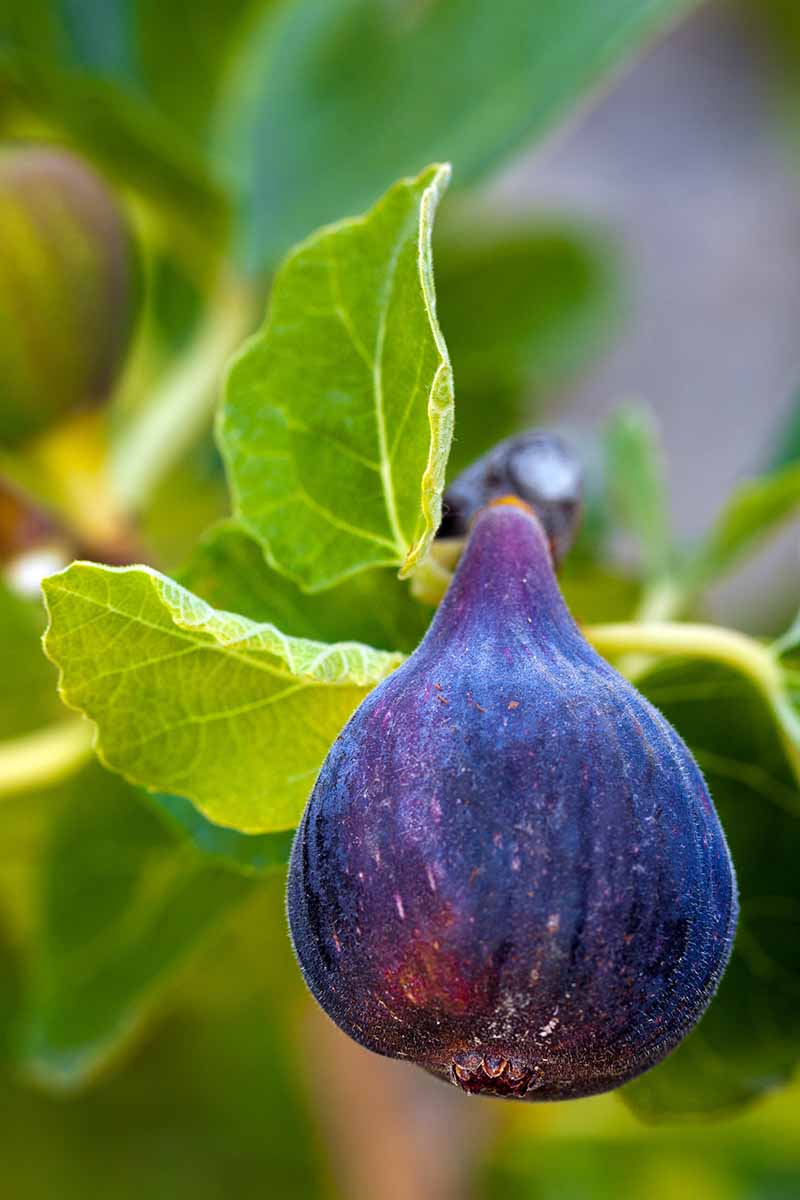
Alternatively, you might purchase a dwarf-type fig, plant it in a large container with casters, and overwinter it in a protected area such as a garage.
One consideration to keep in mind is that, regardless of hardiness rating, the timing of a cold spell can impact a fig tree’s ability to withstand the chill unscathed.
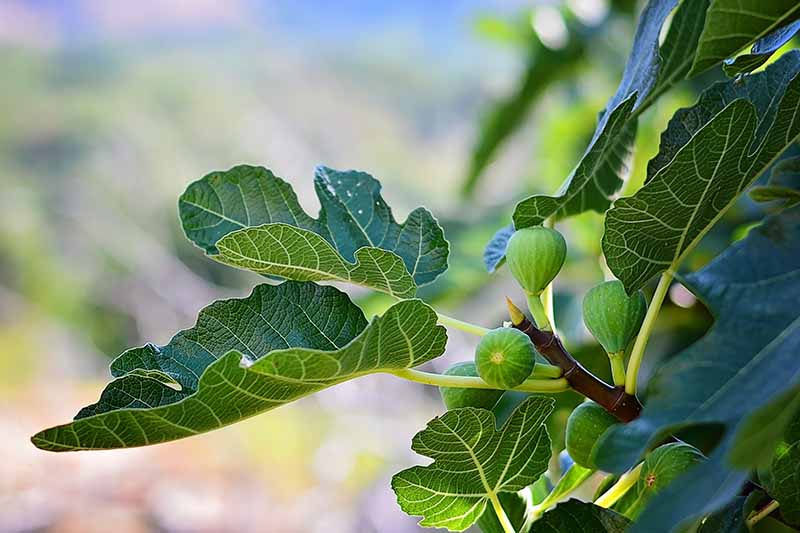
In other words, if temperatures drop from 70°F to 10°F very quickly, the plant will be less likely to be undamaged than if the temperature had decreased more gradually.
Cold-Tolerant Varieties to Choose
Check out this list of cold-hardy fig varieties that could soon be enlivening your landscape and tickling your palate.
1. Brown Turkey
These big beauties can grow to 20 feet tall, but can also be pruned to a more manageable size – around 8 feet tall is most desirable. Some people even prune ‘Brown Turkey’ trees into bonsai plants!

‘Brown Turkey’ does well in Zones 7 to 9, but with extra attention will overwinter in Zone 6, as well.
This tree has shallow, somewhat invasive roots, so keep that in mind when selecting a site.
Find a ‘Brown Turkey’ plant in a four-inch pot from Hirts: Edible Figs via Amazon.
You can also order live plants from Home Depot.
2. Brunswick
Also known as ‘Magnolia,’ the ‘Brunswick’ variety grows to about 10 feet tall by 12 feet wide.
This tree produces medium-to-large purple fruit, and the pink to amber flesh is especially well-suited for preserving.

‘Brunswick’ does well in USDA Zones 7, 8, and 9. It is hardy to 5°F.
Live plants of three to eight inches tall for this variety are available from Wellspring Garden Store via Amazon.
3. Celeste
‘Celeste’ produces small, brown-purple figs that are rich and sweet – so sweet that another nickname for this variety is “sugar fig.”
The attractive tree can get quite large at 15 feet tall and wide.
‘Celeste’ is cold-resistant to 0°F – like what you will find in Zones 5 and 6 – and does especially well in Zones 7 to 9.
Keep in mind that you will have to offer the tree protection, as described above, in the colder zones.
This low-maintenance tree is self-fertile, meaning you need only one tree to get fruit. It’s not picky about soil, as long as it is well-draining.
You can find ‘Celeste’ plants in #3 and #5 containers available at Nature Hills Nursery.
Home Depot carries plants in two-gallon pots.
4. Hardy Chicago
This variety produces sweet, light purple-brown figs that ripen in late summer. The tree grows 10 to 15 feet tall, with a spread of nine to 12 feet.
Among the hardiest of fig trees, this one will withstand Zone 6 winters, and maybe even Zone 5, if planted in a sheltered location. Its stems are hardy to 10°F and its roots can withstand temperatures down to -20°F.
Stems that die back will likely resprout in spring and produce fruit on the new wood.
This cultivar is also known as ‘Bensonhurst Purple.’
You can find plants in #3 containers available at Nature Hills Nursery.
Or see our guide to growing ‘Hardy Chicago’ fig trees here.
5. Petite Negra (Negri)
With a mature size of three to four feet tall and wide, the highly prunable ‘Petite Negra’ is particularly well-suited for container growing.
It’s hardy to Zone 7, but if you grow it in a container, simply move it to a sheltered spot or indoors to overwinter.
This plant is self-pollinating. Its medium-to-large, deep purple-black fruit has a thin skin and is quite tasty, and you’ll likely get two crops a year.
6. Violette de Bordeaux
Also known as ‘Negronne,’ this variety is on the smaller side, growing to six to 10 feet tall and spreading four to five feet wide.
The blackish-purple fruit with purple-red pulp is known for its lovely fragrance and rich, sweet flavor.
This one does well in Zones 5 to 9, though it will need winter protection in Zones 5 and 6.
You can find ‘Violette de Bordeaux’ available at Nature Hills Nursery.
7. White Marseilles
This fig was apparently a favorite in Thomas Jefferson’s gardens; he is said to have discovered it in France and introduced it to the United States.
This variety is particularly well-suited to northern climates, and is considered appropriate for Zones 6 to 9.
Its fruits are greenish-yellow and have sweet yellow flesh. It grows to a height and width of 10-12 feet.
Live plants of this variety are available at Burpee.
Plenty of Fig Options for Colder Areas
If you’re looking to grow this Mediterranean favorite in a chilly part of the country, as you can see, you have choices.
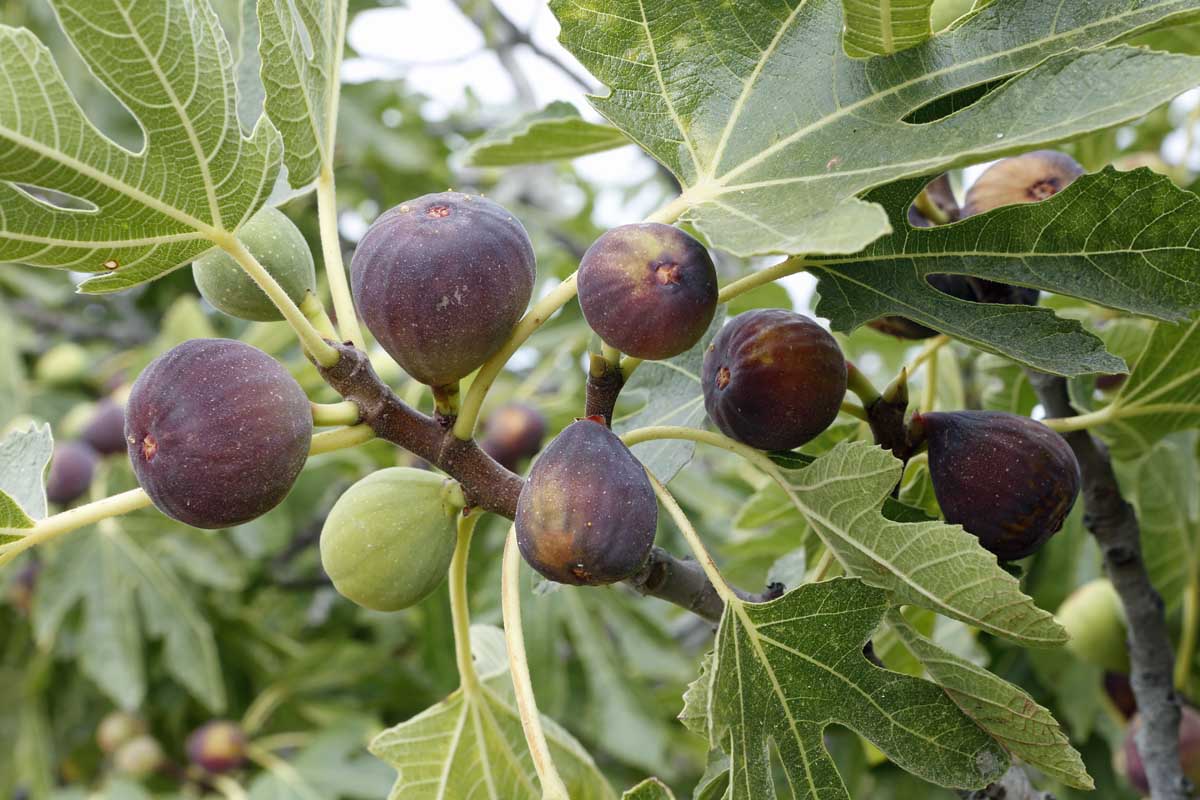
You may have to take a little more care than those of us in the south do, but with the proper varietal selection and a bit of TLC come fall, your tree should do just fine.
Do you grow figs in the North? In the comments area below, tell us your favorite type and any tips you have for fellow cool-weather gardeners.
Looking for other fruit trees for your orchard? Check out these articles:
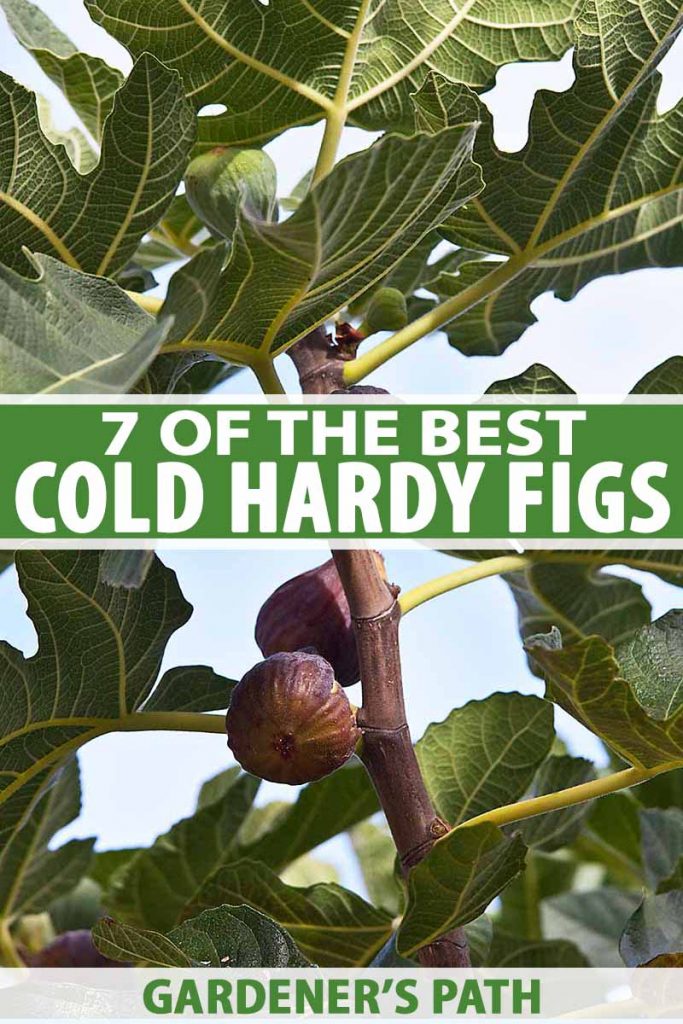
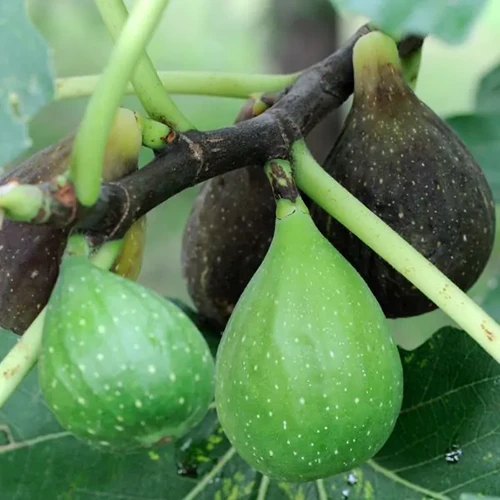
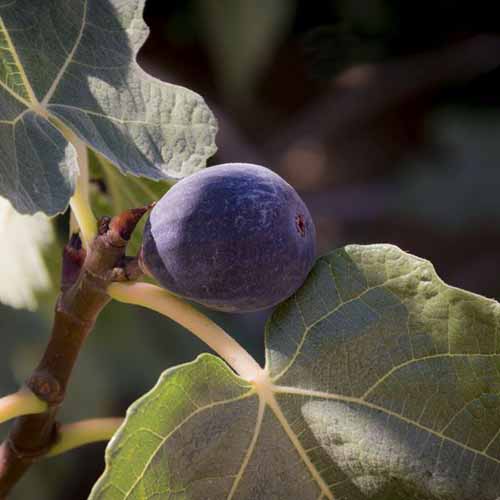
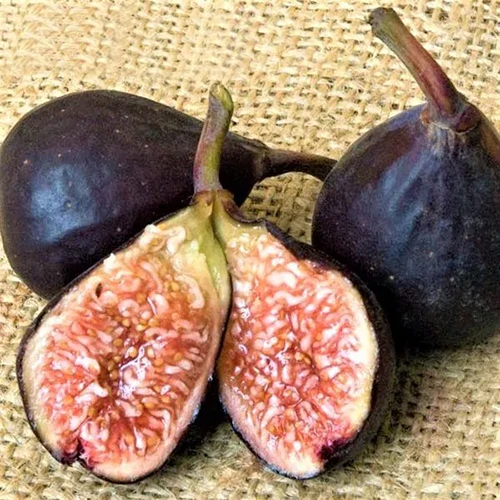
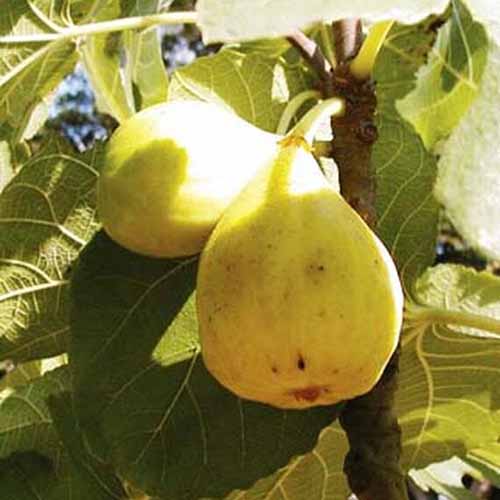
I have 2 fig trees in containers in my home (MA). Both are about 5’ tall. I have been battling spider mites and thrips all year. After finally getting them under control, one of the trees developed about 10 small fruits; I was so excited! After 2 days(that I had the flu) I looked at the trees and not only were the fruits gone, but the entire tree was sagging and withering! The other tree was fine. I have no idea what’s happened, but I am heartsick! I was given the trees last summer and I don’t know much about… Read more »
I don’t have any recommendations, but I have recently bought two olympian figs to be indoors only. I lost a red angel pomegranate plant while I was sick a few years ago that was battle infection so I know the feeling!! (and that plant had lost all of its leaves and flowers, regrew and was fruiting 2 poms!!!)
I hope you solve your issues. As a fellow northern-based, container-growing, indoor plant person, I wish you luck!!!!
To battle insects, make a mixture of water and dish soap, dawn is your best bet and add 10-20 drops of (real) peppermint oil to the mixture. As far as the fig tree is concerned, it’s best to have an arborist come and look at it and tell you how to take care of it properly, but from what I have read; I’m not a gardener and can only parrot information I have gleaned from the experienced; you can scrap the twig sized branches and see if they are green underneath the bark. Gray or brown indicates that part of… Read more »
Hi Jennifer –
While it’s possible that a lack of water caused the fruit drop and wilting, another possibility is soil nematodes. I recommend contacting your local agricultural extension representative to conduct a soil test and discuss the tree’s condition.
I just simply love cold hardy figs! I have successfully overwintered most of the varieties mentioned above in St Louis, MO (zone 6). My absolute favorite is a variety a friend of mine brought back from China. He calls it ‘Tsing Tao.’ It has survived with minimal protection for three winters now and always produces a large, sweet crop of fruit from September to October. I truly believe it gives hardy Chicago a run for its money in terms of hardiness, with MUCH tastier fruits. A true marvel sourced from the Far East!
Oooh, I’m going to have to try to find some of those ‘Tsing Toa’ trees. How did your friend get them through customs? Were they cuttings for grafts?
Any chance you would be willing to share some cuttings
me too… I will pay…thanks for the info
Rigolo…TsingTao…is a reputable and excellent beer brand brewed in Quingdao…not so sure that it corresponds to a fig variety…
Steve could I buy a cutting from you?
Can u send a cutting up to northern il?
Green ischia also known as verte is another good cold hardy choice or at least it has been in my zone 7.
I need to fine a smallish fig tree that produces fruit in September. We live in Lubbock Tx zone 6-7. The weather takes the fruit every year either snow or hail or wind. Any suggestions?
Reinforced plexiglass enclosure with air holes for protection.
There is an excellent suggestion in the article above.
cattle panel arch with plastic
Hi everyone I grow many verities of cold hardy figs in Pa. One of my favorite Cold Hardy figs is Dark Portuguese. it grows a medium size fruit of around 35-45 gram weight.The fruit is very nice good sweet berry taste with a slight seed crunch and a sweet tasting skin. If you can find it for sale i recommend that you buy one for yourself.
Hi Jim,
Do you grow your figs in containers or outside?
My Celeste fig tree is about 20 years old and has been a wonderful producer. It must be at least 15’ or 20’ tall. We had a freeze this year down to 1 degree, this is April now, and there are no leaves or fig buds. The main branches have a black stain on them, quite extensively. There are baby fig trees underneath the main tree which look good. Can you tell me if my tree is save able. We live in East Texas. Please help! Thanks
It will probably regrow from the ground if your seeing signs of life. With regards to the dead branches prune them step by step. Once you cut (start with the thinner, newer branches) look in the inside of the wood for signs of life such as a green or white layer, if you get sap or water you can stop cutting where you find it as that wood is probably healthy. If you have any wax on hand use it seal the cut as well but I don’t think that’s essential.
I grow the Chicago Hardy Figs and my stock plants are three years old now, with just a couple of figs finally. I took cuttings of them this past March and now I have 8 young plants to plant.
Same here… my Chicago hardy planted two years ago got us ten figs this summer. And they’re very good. Will try to take some cuttings and plant more next Spring.
I live in Bronx, NY on the Long Island Sound. I have two Hardy Chicago figs planted in pots in my yard. I attached a photo of my older tree. The older tree is 5 years old and is producing the most and largest fruit yet. The younger tree is 2 years old and is producing some fruit already. They are is full strong sun. In the spring, I feed them Barbara King’s plant food which is good for all plants. My trees, vegetables and flowers love it. In the winter, I wrap the older tree with a tarp and… Read more »
Excellent! Thanks for sharing, Anna!
Gorgeous tree! I live near Poughkeepsie and haven’t been able to keep my hardy Chicago outside. I tried the whe tarp thing (i guess it was only 2 yrs old then) and just bring it in and out of the barn to winter. It’s 5 years old now – I’d really love to plant it in the ground but I’m so afraid of it getting damaged!
Wowww… beautiful! What would be the height of these trees
Bayernfeige Violetta also named Bavarian fig is a hardy variety. “Grow fruit” from DK publishing says that is extremely hardy.
There are some detractors which say that “Bavarian Fig” is actually Violetta is nothing else than an “English” brown turkey.
I hope you are still here. I wrapped my fig trees now three years old. The first year I had three, two came back, but we unwrapped too late. (7b zone). It is now in the 20s at night, and 40s days. It is too early to unwrap them?
It’s important to uncover them before it gets too late in the season, but this depends on the weather as well as what you’ve wrapped them with. Warm, mild, and wet late winter weather can introduce rot, and early spring warmth can cause plants to cook if wrappings don’t allow for proper airflow. Since it’s now March, you’re unlikely to see a return to the most extreme cold winter temperatures in Zone 7b, though there is currently a cold snap in the forecast for parts of Zone 7. Consider your local conditions carefully to decide whether it may be best… Read more »